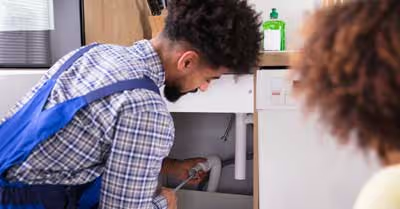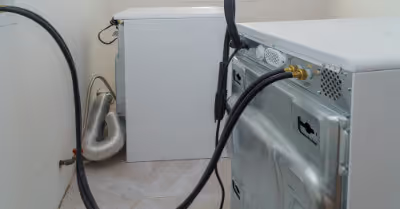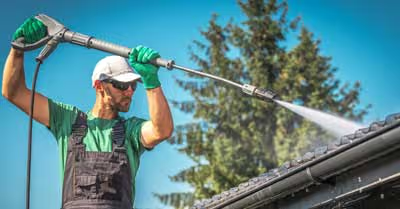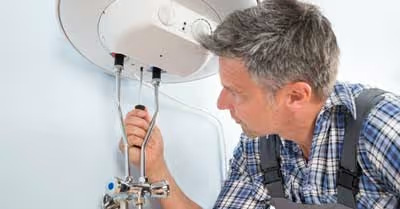Table of Contents
How to Identify a Brown Recluse Spider
There are a few different things to look for to identify a Brown Recluse spider:
- Tan to dark brown in color
- Three sets of two eyes, totalling 6 (most spiders have 8 eyes)
- Fine hairs on their legs that are nearly invisible
- Oval shaped body ⅓ to ½ inches long
- With legs, they have a diameter of about an inch
- Body and legs are the same color
- Violin shaped marking on head that points towards the abdomen
If you are still unable to identify the spiders, treat them as if they are Brown Recluse spiders. It is better to be safe.
Brown Recluse Spider Bites
A Brown Recluse spider bite can be very problematic. What are the complications, what does it feel like, and should you seek medical treatment?
When a Brown Recluse spider first bites, it typically isn’t extremely painful. However, the pain will increase in the next 8-12 hours. Then, 24-48 hours after the initial bite, you may experience some additional symptoms:
- Fever
- Chills
- Joint pain
- Nausea
The area around the bite may also harden and become inflamed. The way the spider’s venom works is different from a Black Widow spider. The venom of a Brown Recluse spider contains an enzyme that breaks down the cell membranes around the bite. This peels away the tissue and creates an open wound.
The size of the wound can be as small as a fingernail or as large as a hand. It will slowly heal and leave an unsightly scar.
The bite itself often looks like a bulls-eye with a red ring encircling a spot of white. If you have a blister, severe pain, infection, or breathing difficulty seek medical attention immediately.
How to Avoid a Bite From a Brown Recluse Spider
If your home is infested with Brown Recluse spiders, you want to do everything you can to avoid a bite. They like to hide in clothing and shoes, so it is good to store them inside plastic bags until you need to wear them. You can shake the clothes and shoes out before putting them on.
Brown Recluse spiders also like to hang out in curtains so move your bed away from them (or remove the curtains entirely). You should also remove bedspreads and make sure your bed is raised above the floor. It is also smart to inspect your bedding before laying in it.
How to Locate Brown Recluse Spiders
When you look for Brown Recluse spiders, be sure to wear gloves and long sleeves for protection. It is also good to use a flashlight since they can be found in dark places.
To locate Brown Recluse spiders, you need to know where they hide. As their name suggests, they are reclusive. This means they hide in debris and clutter. Some of the areas you may find them are:
- Boxes
- Inside wall space
- Under insulation
- Under rocks
- Under wood
- In leaves or bark
- In clothing or shoes
- In crevices
- Undisturbed toys, paper, and books
- Or any other place where they can hide from sight without interruption
Even if you don’t see the spiders themselves, you may see cobwebs. Brown Recluse spiders don’t have symmetrical webs. This is because they don’t use a web to catch prey. If you see a web in between tree branches or other places to catch prey, it isn’t a Brown Recluse spider. Also, if you see prey in the web, it isn’t a Brown Recluse spider.
The Brown Recluse spider uses their web as its home and the place where they lay their eggs. They are generally located in dark, hidden areas.
If you are still unsure of where the spiders have made a home, you can use glue traps to locate them. The type of traps made for mice work. Place them in various locations around your home, especially near prime hiding spots. Over the course of one to three nights, you will be able to locate the areas where most of the spiders are hiding because more will be stuck to the glue traps.
How to Reduce Hiding Spots for Brown Recluse Spiders
Now that you know where they hide, and may have found their webs or the spiders themselves, you need to get rid of these hiding spots. It is unlikely that you can get rid of every location that Brown Recluse spiders find suitable, but do the best you can.
If you can clean up some of the debris and clutter, do so. It may not be possible to eliminate woodpiles, rocks, and other debris, but if you can move them away from your home you will reduce the chance of encountering the spiders. You may also want to cover these hiding spots with plastic.
Any shrubbery or vegetation around your home should be cut often to reduce pathways where the spiders can hide while making their way towards your residence. You should also seal crevices and cracks that may be prime real estate to such an elusive spider.
How to Get Rid of Brown Recluse Spiders
Now that you have located hiding spots and removed as many as possible, you can eliminate the spiders. There are some different methods and a combination of two or more is most effective.
Vacuum Cleaner
A vacuum cleaner can be used to suck up webs and any spiders you see. It will also get rid of egg sacs. Be sure to put the vacuum bag into at least one other bag and immediately take it to the garbage. You don’t want those eggs hatching inside your home.
Contact Spray
You can use contact spray to kill off any Brown Recluse spiders you see. However, since these spiders are reclusive, a contact spray will likely not be enough. In addition to contact sprays, you should use at least one other method.
Dust
A residual dust product can be very effective and generally lasts months. This is the best method for extermination of Brown Recluse spiders. You can use it in cracks, crevices, inside the walls, and underneath insulation. It is best to use a duster meant for insecticides and only apply a small layer because spiders will avoid it if it is too noticeable. Residual dust can also prevent additional Brown Recluse spider invasions.
Spot Treatment
Spot treatment insecticides can be effective when combined with dust. You can spread it or spray it around the perimeter of your home, in corners, and any locations where you found webs or spiders. Not only will this kill existing spiders, but it will also prevent them.
Bug Bombs
Bug bombs and foggers are generally ineffective against Brown Recluse spiders. However, they can serve one purpose. If there are locations that you cannot get to, then a fogger may be the only option.
Glue Traps
Glue traps that are made for mice or rats can help you locate where the bulk of spiders are located. However, they will also reduce the population. Place as many as you can throughout your home in a variety of locations. As the infestation weakens, you will notice that less spiders are getting trapped in the glue traps.
Recent Articles
















